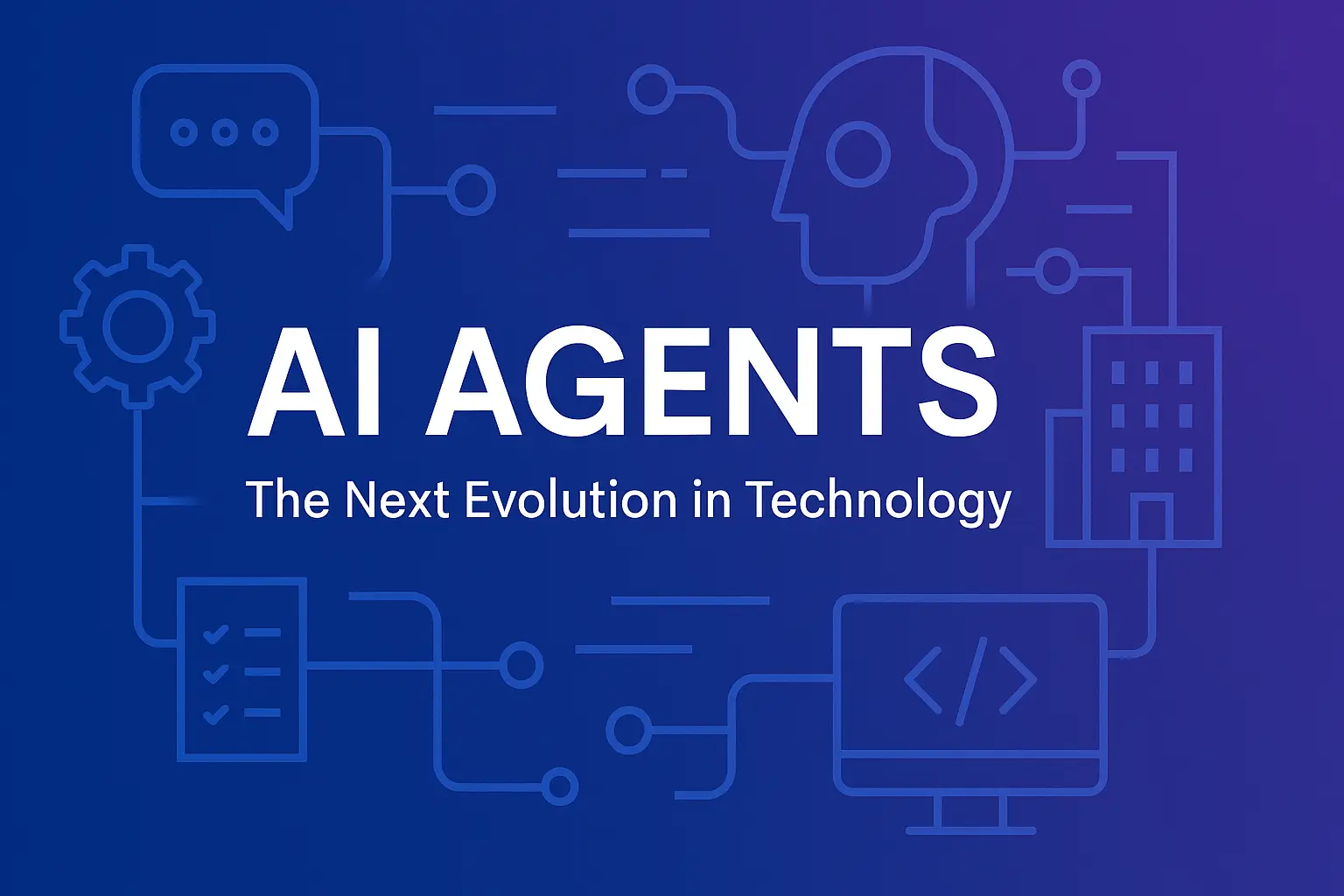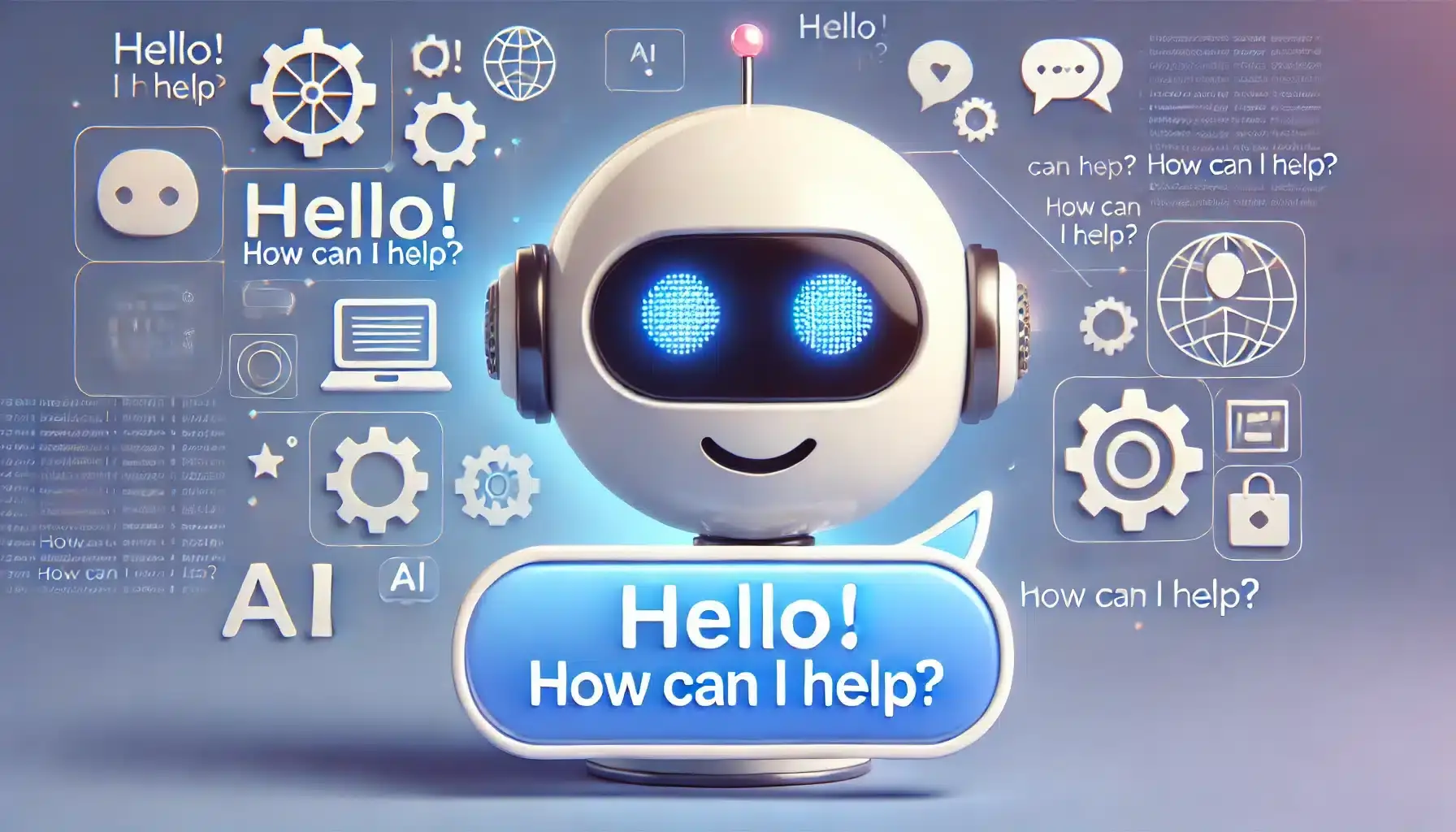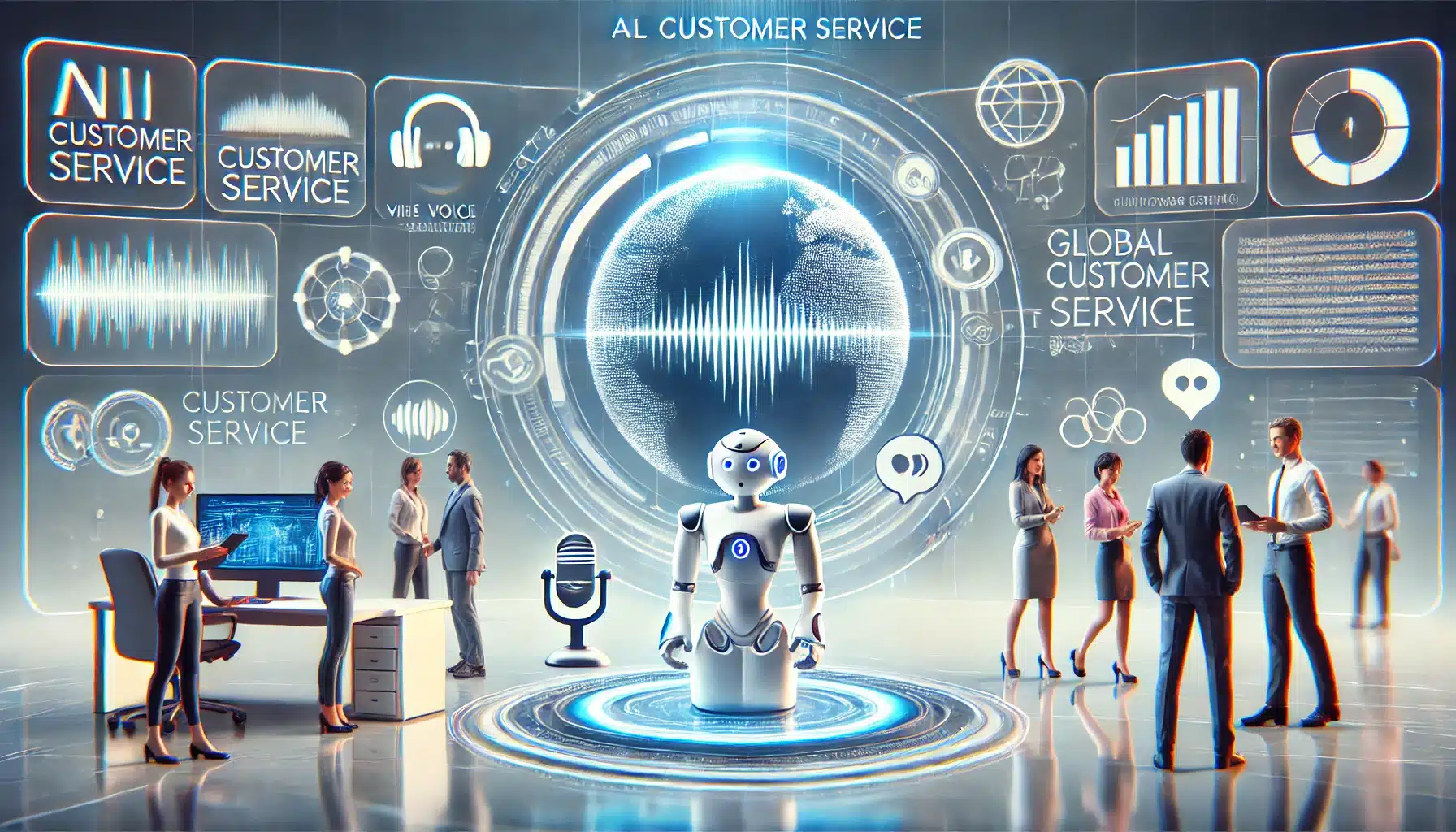Introduction
AI agents are rapidly transforming how we interact with technology, moving from simple automated tasks to complex, autonomous decision-making. In essence, AI agents are intelligent systems designed to perceive their environment, reason about it, and take actions to achieve specific goals. This surge in popularity is driven by a confluence of factors: the increasing need for automation to enhance efficiency, the computational power to handle complex algorithms, and, most notably, the significant advancements in Large Language Models (LLMs) that enable nuanced understanding and generation of human-like text. As a result, industries ranging from customer service and e-commerce to healthcare and software development are rapidly adopting AI agents to streamline operations and deliver unprecedented levels of personalization.
What Are AI Agents?
1.1 Definition & Core Functions
AI agents are autonomous systems that can perceive their environment through sensors or APIs, reason about the information they gather, and take actions to achieve specific objectives. This distinguishes them from traditional chatbots, which are typically rule-based and limited to predefined scripts. AI agents, powered by LLMs, exhibit a higher degree of autonomy and adaptability, capable of understanding complex queries and generating contextually relevant responses.
Key components include:
| Component | Function |
|---|---|
| LLM Integration | Enables natural language understanding and generation |
| Decision-Making Algorithms | Supports informed choices based on goals and input data |
| Contextual Awareness | Maintains context across interactions for relevance and personalization |
1.2 How AI Agents Work
The operation of an AI agent can be broken down into a step-by-step process:
Input Perception: The agent perceives its environment through various inputs, such as natural language processing (NLP) for text-based interactions, API calls for data retrieval, or sensors for real-world data.
Processing & Reasoning: The agent utilizes LLMs and other algorithms to process the input, understand the user’s intent, and reason about the best course of action. This stage involves decision-making based on predefined goals and available data.
Action Execution: The agent executes the chosen action, which might involve generating a response, automating a workflow through API integrations, or manipulating physical objects.
Example: An AI agent handling customer support tickets might receive a ticket through an API (input perception), analyze the ticket using an LLM to understand the issue (processing & reasoning), and then either provide a solution or escalate the ticket to a human agent via an automated workflow (action execution).
Key Applications of AI Agents
2.1 AI Agents in Customer Service
AI agents are revolutionizing customer service by automating routine tasks, reducing response times, and delivering personalized support at scale. Unlike traditional chatbots that rely on rigid decision trees, modern AI agents leverage LLMs (Large Language Models) like GPT-4 and Claude to understand nuanced queries, analyze sentiment, and resolve complex issues autonomously.
Key Applications & Benefits
24/7 Automated Support
AI agents handle FAQs, order tracking, and returns without human intervention.
Example: Zendesk’s AI Agent reduced average response times by 40% by automating ticket categorization and prioritization.
Sentiment Analysis for Emotional Intelligence
NLP-powered agents detect frustration or urgency in customer messages and adjust responses accordingly.
Case Study: A fintech company used Google’s Dialogflow to reduce escalations by 25% by routing upset customers to human agents faster.
Multilingual Support
AI agents like Intercom’s Fin translate and respond in 100+ languages, breaking global service barriers.
Expert Insights
Dr. Sarah Chen (AI Researcher, Stanford):
“The next frontier is AI agents that predict customer needs before they’re voiced. For instance, analyzing past interactions to proactively offer refunds or troubleshooting guides.”
Gartner Prediction: By 2026, 60% of customer service interactions will involve AI agents, up from 15% in 2022.
Challenges & Solutions:
| Challenge | Solution |
|---|---|
| Hallucinations | Fine-tune LLMs on domain-specific data |
| Lack of Empathy | Use hybrid human-AI workflows |
| Integration Costs | Leverage low-code platforms (e.g., Freshdesk AI) |
Tools Driving Adoption
Zoho Zia: Automates ticket resolution with predictive analytics.
Ada Support: AI agent for e-commerce brands like Spotify and Meta.
Kore.ai: Enterprise-grade agent platform for banks and healthcare.
2.2 AI Agents in E-Commerce & Sales
The e-commerce industry is undergoing a seismic shift with the integration of AI agents, transforming how businesses interact with customers, personalize shopping experiences, and optimize sales funnels. Unlike traditional automation tools, AI agents leverage Large Language Models (LLMs), predictive analytics, and behavioral data to deliver hyper-personalized recommendations, streamline CRM workflows, and boost conversion rates.
How AI Agents Are Revolutionizing E-Commerce
Personalized Shopping Assistants
AI agents analyze browsing history, past purchases, and real-time behavior to suggest products tailored to individual preferences.
Example: Amazon’s Rufus AI (2024) acts as a conversational shopping assistant, answering product questions and comparing items based on user intent.
Impact: Brands using AI-driven recommendations see 20-35% higher average order values (AOV) (McKinsey, 2024).
Dynamic Pricing & Inventory Management
AI agents adjust prices in real-time based on demand, competitor pricing, and stock levels.
Case Study: Walmart’s AI pricing agent reduced overstock waste by 15% while increasing margins by optimizing discounts.
AI-Powered CRM Automation
Lead scoring: AI agents prioritize high-intent customers using predictive analytics.
Automated follow-ups: Send personalized emails or SMS based on cart abandonment triggers.
Example: Shopify’s Sidekick AI automates post-purchase engagement, reducing churn by 12%.
Expert Insights
Andrew Ng (AI Pioneer, DeepLearning.AI):
“The future of e-commerce is AI agents that act as 1:1 sales reps—anticipating needs, negotiating prices, and closing deals autonomously.”
Gartner Prediction: By 2025, 30% of digital commerce revenue will come from AI-driven product discovery.
Challenges & Solutions
Challenge Solution
Data Privacy Concerns GDPR-compliant AI agents (e.g., SAP’s AI Ethics Toolkit)
Over-Personalization Balance customization with serendipity (e.g., Spotify’s Discover Weekly model)
Integration Complexity Plug-and-play AI tools like Salesforce Einstein
Top AI Agent Tools for E-Commerce
| Tool | Use Case |
|---|---|
| ViSenze | Visual search for product discovery |
| Klaviyo AI | Predictive email marketing segmentation |
| Replika AI | Virtual assistants for D2C engagement |
2.3 AI Agents in Software Development
The software development landscape is undergoing a radical transformation as AI agents evolve from simple code assistants to autonomous developers capable of handling entire projects. These advanced systems leverage large language models (LLMs), reinforcement learning, and automated testing frameworks to streamline development workflows, reduce bugs, and accelerate time-to-market.
The New Era of AI-Powered Development
Autonomous Coding Assistants
Modern AI agents like Devin AI (the world’s first AI software engineer) can write, debug, and deploy full applications with minimal human intervention
Example: Devin successfully completed a freelance programming job on Upwork, showcasing its ability to understand requirements and deliver working code
Impact: Early adopters report 55% faster development cycles when using AI coding assistants (GitHub, 2024)
Intelligent Debugging Systems
AI agents analyze code in real-time to:
Detect potential bugs before execution
Suggest optimal fixes
Learn from past mistakes to prevent recurrence
Case Study: DeepCode AI reduced production bugs by 40% at a Fortune 500 tech company
Automated Testing & Deployment
AI agents can:
Generate comprehensive test cases
Execute regression testing
Optimize CI/CD pipelines
Example: Testim.io uses AI to maintain test scripts automatically, reducing QA time by 60%
Expert Insights
Matt Welsh (Former Google Engineer, Harvard CS Professor):
“We’re entering an era where AI agents will handle 80% of routine coding tasks, allowing human engineers to focus on architectural challenges and innovation.”
GitHub Report: 92% of developers using AI coding tools report higher job satisfaction and productivity
Technical Deep Dive: How AI Development Agents Work
Code Generation Pipeline:
Natural language requirements → LLM processing → Syntax-aware code generation → Context-aware refinement
Architecture Components:
Knowledge Base: Vector databases storing API docs, best practices
Validation Engine: Static analysis + dynamic testing
Learning Module: Continuously improves from code reviews
| Metric | Human Developer | AI Agent |
|---|---|---|
| Lines of Code/Hour | 50–100 | 500–1000 |
| Bug Rate (/1000 LOC) | 15–20 | 5–8 |
| Context Switching Time | ~30% of workday | Near-zero |
Challenges & Mitigation Strategies
Challenge Solution Tool Example
Code Quality Variability Human-in-the-loop review systems PullRequest.ai
Security Vulnerabilities AI-powered static analysis Snyk Code AI
Architecture Complexity Hybrid human-AI design sessions Miro AI
Leading AI Development Tools
GitHub Copilot X: Now with CLI agent and PR review capabilities
Tabnine Enterprise: On-premise AI coding assistant for sensitive environments
Amazon CodeWhisperer: Specialized for AWS infrastructure code
Codium: AI agent for generating meaningful test coverage
Building & Deploying AI Agents
3.1 Essential Components of AI Agent Architecture
The architecture of modern AI agents represents a sophisticated fusion of cognitive computing, data engineering, and distributed systems design. As these systems evolve from narrow task performers to general-purpose assistants, their architectural frameworks have grown increasingly complex yet remarkably elegant. Let’s dissect the core components that enable today’s most advanced AI agents to operate with human-like competence across diverse domains.
The Neural Backbone: LLM Orchestration Layer
At the heart of every AI agent lies its Large Language Model (LLM) infrastructure, which has evolved far beyond simple API calls to GPT-4 or Claude:
Multi-Model Routing Systems
Modern agents dynamically select from specialized LLMs (coding, creative writing, analysis)
Example: An agent might use Claude-3 for legal analysis but switch to GPT-4 Turbo for creative tasks
Benchmark: Multi-model systems show 28% higher accuracy than single-model approaches (Anthropic, 2024)
Context Management Engine
Hierarchical memory systems with:
Short-term cache (current session)
Mid-term vector database (recent interactions)
Long-term knowledge graphs (permanent storage)
Innovation: Weaviate’s new hybrid search combines semantic + keyword retrieval
Parameter-Efficient Fine-Tuning
LoRA (Low-Rank Adaptation) modules customize base models
Case Study: Salesforce’s Einstein Agent uses industry-specific adapters for CRM tasks
The Cognitive Framework: Decision Systems
Moving beyond simple prompt-response cycles, advanced agents employ:
ReAct Architecture
Reason (analyze situation)
Act (choose tool/action)
Observe (evaluate outcome)
Impact: ReAct agents solve 3× more complex problems than chain-of-thought (Google Research)
Monte Carlo Tree Search (MCTS)
Used in systems like DeepMind’s AlphaCode 2
Evaluates thousands of potential solution paths
Performance: Top 15% in competitive programming contests
Emotional Intelligence Modules
Affect detection models analyze user sentiment
Example: Woebot Health adjusts therapeutic responses using emotional cues
The Physical Interface: Action Execution Layer
| Component | Function | Tech Stack |
|---|---|---|
| API Orchestrator | Manages 1000+ API integrations | Apache Camel + Retry mechanisms |
| Robotic Control | Physical task execution | ROS 2 + Digital Twin simulation |
| Browser Automation | Web interaction capabilities | Playwright + Computer Vision |
Emerging Architectural Patterns
Agent Swarms
Multiple specialized agents collaborating
Example: AutoGen’s team of researcher, writer, and reviewer agents
Neuromorphic Computing
IBM’s NorthPole chip enables brain-like efficiency
Benchmark: 22× more queries per watt than GPUs
Self-Improving Systems
LLM-Bootstrapping where agents write their own training data
Controversy: Potential for “model collapse” if unchecked
3.2 Top AI Agent Frameworks & Tools
Several frameworks and tools facilitate the development of AI agents:
AutoGPT and BabyAGI: Open-source projects that enable the creation of autonomous agents for various tasks.
LangChain: A framework for building applications powered by language models, including AI agents.
AWS Bedrock vs. Microsoft Autogen: Cloud-based platforms offering pre-trained models and tools for building AI agents.
Open-source vs. proprietary solutions: While open source solutions offer customization and flexibility, proprietary platforms provide robust support and enterprise grade features.
3.3 Evaluating AI Agent Performance
Evaluating AI agent performance is crucial for ensuring accuracy and reliability. Benchmarking tools, such as the AI Agent Leaderboard, provide metrics for comparing different agents. Key metrics include accuracy, response time, and autonomy level. However, testing AI agents presents unique challenges due to their dynamic nature and ability to learn and adapt.
Ethical & Security Considerations
4.1 Bias & Fairness in AI Agents
AI agents, particularly those powered by LLMs, can inherit biases from their training data, leading to unfair or discriminatory outcomes. LLM hallucinations, where agents generate false or misleading information, pose another significant risk. Mitigation strategies include fine-tuning models with diverse datasets and implementing human oversight.
4.2 Privacy & Data Security
Deploying AI agents, especially in API-driven workflows, raises concerns about privacy and data security. GDPR compliance is essential for protecting user data. Preventing data leaks and unauthorized access requires robust security measures and encryption.
Future Trends in AI Agent Technology
5.1 Autonomous AI Agents
The future of AI agents lies in developing highly autonomous systems capable of self-improvement and collaboration. Recursive self-learning, where agents learn from their own experiences, and multi-agent collaboration, mimicking swarm intelligence, are key areas of research.
5.2 AI Agents in Emerging Industries
AI agents are poised to transform emerging industries such as healthcare diagnostics, where AI doctor assistants can provide personalized medical advice, and legal and compliance automation, streamlining complex legal processes.
5.3 The Next Frontier: AGI & Beyond
The pursuit of Artificial General Intelligence (AGI), where AI systems possess human-level cognitive abilities, is the ultimate goal. While the timeline remains uncertain, advancements in AI agent technology bring us closer to this milestone. Predictions for 2030 and beyond suggest a future where AI agents play an integral role in all aspects of life.
Conclusion
AI agents represent a paradigm shift in how we interact with technology, offering unprecedented levels of automation, personalization, and efficiency. From customer service and e-commerce to software development and healthcare, the applications of AI agents are vast and transformative. As we move closer to 2025, businesses must embrace AI agents to stay competitive and deliver exceptional user experiences. Which AI agent use case will you explore first?
Sources and related content:




